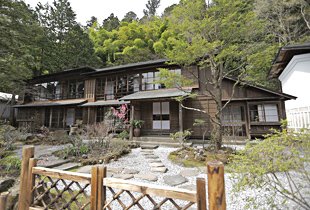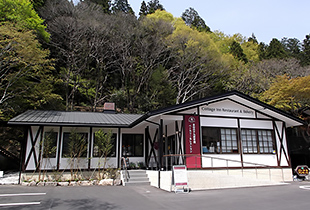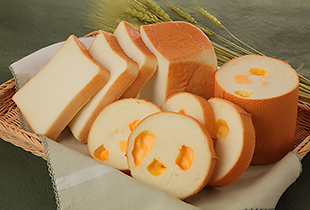A Nationally-designated Cultural Property
Kanaya Hotel History House
with two different historic values
400-year Old Samurai Residence
and
One of Japan’s First Lodgings for Foreign Guests
NIKKO – foreign diplomats’ summer retreat in old times
In Meiji (1868-1912) era , Nikko was better known among foreigners who lived in Japan than Japanese people in general. The first guide book of Nikko in English was published in 1875 by Ernest Satow, a British diplomat who fell in love with the beauty of Nikko, Lake Chuzenji, in particular, where he built his summer villa in 1896.
Along with Satow, Isabella Bird, the author of “Unbeaten Tracks in Japan”, made tremendous contributions in disseminating the name “Nikko” internationally.
Today, Nikko is famous as a World Heritage site with its magnificent shrines and temples, however, Nikko has another very unique history as a summer retreat for many foreign diplomats who worked in Japan during Meiji era and beyond.
Nikko Kanaya Hotel – its birth
In 1870, Dr. James C. Hepburn, an American medical missionary, visited
Nikko and stayed at the house of Zenichiro Kanaya, who was a member of Gagaku (an ancient imperial court music) orchestra of the Toshogu Shrine. Foreseeing an increase in the number of foreign tourists to Nikko, Dr. Hepburn suggested that Kanaya open a hotel for foreigners. Following Hepburn’s advice, Zenichiro remodeled his house and opened “Kanaya Cottage Inn” in 1873.
In 1878, Isabella Bird, an English explorer, visited Nikko on her way to the northern Japan. She stayed at Kanaya Cottage Inn for twelve days. In her travelogue “Unbeaten Tracks in Japan,” she expressed her satisfaction with Nikko, Kanaya Cottage Inn and the service provided to her.
Kanaya’s house was originally a residence of samurai warriors during the Edo period. For its unique architectural characteristics, Kanaya Cottage Inn was called “Samurai House” by its foreign guests.
In 1893, Zenichiro relocated his business and opened “Kanaya Hotel” on the top of the hill that overlooks the River Daiya. It was Japan’s first full-fledged western-style resort hotel and has been in operation at the same place to date.
While Japan has undergone dramatic changes over the years, Kanaya Hotel has followed in the footsteps of its founder and upheld its tradition with pride.
Kanaya Hotel History House – with two different historic values
“Kanaya Samurai House” has been well preserved for over 120 years after it ended
its role as a lodging. In 2015, it was registered as a nationally-designated cultural
property and opened to the public under the name of Kanaya Hotel History House.
The house is not only valuable as the birthplace of Japan’s oldest resort hotel but also as an architectural heritage that shows an example of samurai residence.
The room where Isabella Bird stayed in 1878 remains almost the same as it was then. The house takes visitors back into the old days in Japan.
Kanaya Hotel Bakery & Cottage Inn Restaurant
The adjacent Cottage Inn Restaurant serves a variety of dishes cooked with selected local ingredients and freshly baked breads from Kanaya Hotel Bakery that has over 90 years of history.
Kanaya Hotel Bakery shop, located in the restaurant, offers delicious breads and
sweets freshly delivered from the factory.
| Location | 〒1-25 Honcho, Nikko City, Tochigi Pref. 321-1434 Phone: +81-288-50-1873 |
|---|---|
| Access |
[By Bus] [By Car] |
| Parking | Available |
| Opening Hours | All three facilities have some non-business days during the winter season. See Winter Season Non-Business Days . [History House] Mar. – Nov. 9:30 – 17:00 (ticketing closes at 16:30) Dec. – Feb. 10:00 – 15:00 (ticketing closes at 14:30) [Restaurant] [Bakery] |
| Business Days | All three places in common Mar. – Nov. 7 days a week Dec. – Feb. 2 or 3 non-business days a month |












